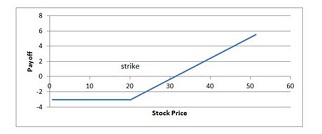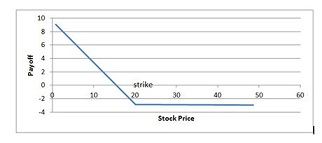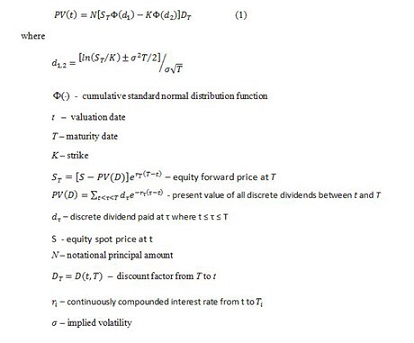Option
FinPricing offers:
Four user interfaces:
- Data API.
- Excel Add-ins.
- Model Analytic API.
- GUI APP.
FinPricing provides probably the most conprehensive valuation models for financial derivatives, including:
| 1. Equity Option Introduction |
Equity options, a typical derivatives, give an investor the right but not the
obligation to buy a call or sell a put at a set strike price prior to the contract’s expiry date. Equity options
are derivatives that means their value is derived from the value of an underlying equity. Investors and traders can
use equity options to take a long or short position in a stock without actually buying or shorting the stock. This is
advantageous because taking a position with options allows the investor/trader more leverage in that the amount of
capital needed is much less than a similar outright long or short position on margin. Investors/traders can therefore
profit more from a price movement in the underlying stock.
Equity options or stock options provide investors a way to hedge risk or speculate. Also option trading can limit
an investor’s risk and leverage investing potential. Option investors have a number of strategies they can
utilize, depending on risk tolerance and expected return.
Buying call options allows you to benefit from an upward price movement (by either selling the option at a profit or
buying the stock at a discount relative to its current market value) while limiting losses to the premium paid if the price
declines or remains constant. The right to buy stock at a fixed price becomes more valuable as the price of the underlying
stock increases. An option seller earns the premium if the underlying stock price would not change much.
Put options may provide a more attractive method than shorting stock for profiting on stock price declines, in that,
with purchased puts, you have a known and predetermined risk. The most you can lose is the cost of the option.
If you short stock, the potential loss, in the event of a price upturn, is unlimited. If you have an established
profitable long stock position, you can buy puts to protect this position against short-term stock price declines.
You can limit the risk of stock ownership by simultaneously buying a put on that stock, a hedging strategy commonly
referred to as a “married put.” This strategy establishes a minimum selling price for the stock during the
life of the put and limits your loss to the cost of the put plus the difference, if any, between the purchase price of
the stock and the strike price of the put, no matter how far the stock price declines. This strategy will yield a
profit if the stock appreciation is greater than the cost of the put option.
| 2. Equity Option Payoffs |
The payoff of a call option is given by
Payoff=N*max(S-K,0)
where N – the notional; S – the stock price; K – the strike.
The payoff diagram of a call option is shown below

The payoff of a put option is given by
Payoff=N*max(K-S,0)
where N – the notional; S – the stock price; K – the strike.
The payoff diagram of a put option is shown below

| 3. Equity Option Valuation |
The present value of a call option is given by

The present value of a put option is given by

where all notations are the same as (1)
Practical Notes
| Related Topics |